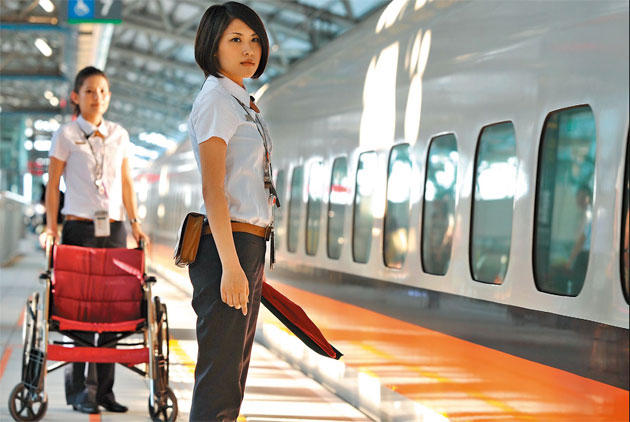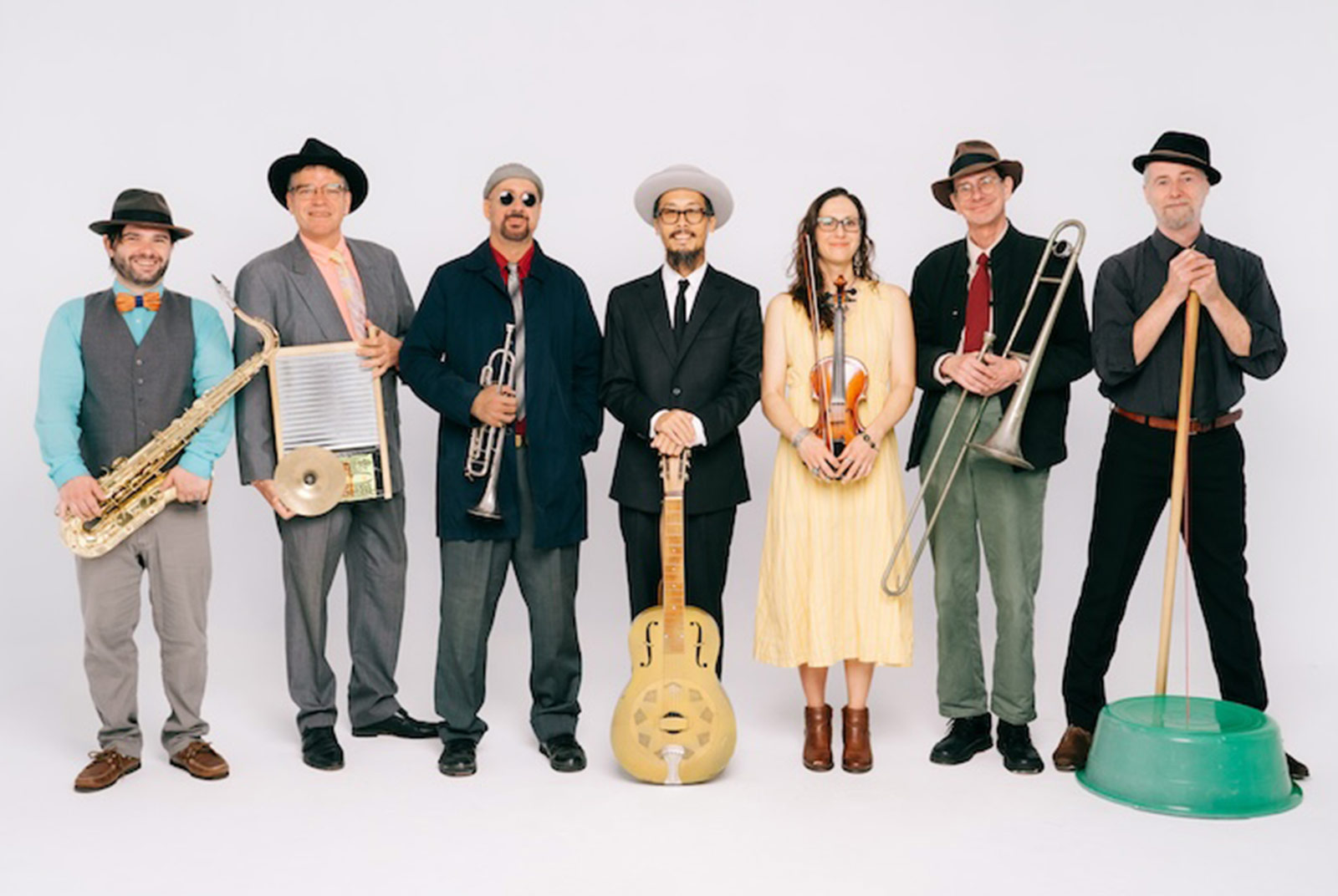Golden Service Champion
HSR: The New Benchmark for Travel Culture

Source:CW
Unveiling a ticket verification system that has wowed counterparts in Europe and Japan, Taiwan High Speed Rail Corp. is starting to shape a new culture of sophisticated travel in Taiwan.
Views
HSR: The New Benchmark for Travel Culture
By Yueh-lin MaFrom CommonWealth Magazine (vol. 501 )
"The cars Taiwan's high-speed rail uses are the same as those on Japan's Shinkansen. The difference between the two is that in Japan, the JR (Japan Railways) personnel are stricter about ticket inspection and it's a real pain," says 30 year-old Tsutsui Takashi, who frequently travels from Japan to Taiwan on business. "In Taiwan, it seems there is no ticket inspection, only when you board and alight the train."
That's the only difference Tsutsui finds between Taiwan's High Speed Rail (HSR) and Japan's Shinkansen, commonly known as the "bullet train" – ticket inspection.
But what Tsutsui doesn't know is that it's not necessarily a lack of ticket inspection on HSR trains, it's just that the system employs Taiwanese technology to check tickets unobtrusively.
HSR's ticket and seating verification system was developed in-house and went online in February of last year. At his office in Taipei's Nangang district, Taiwan High Speed Rail Corp. chairman Ou Chin-der demonstrated the cellphone-sized ticket inspection device for CommonWealth Magazine reporters.
"Hmmm… This train is scheduled to arrive in Taoyuan at 5:06 pm. We sold 478 tickets, 73 of which are special seating for the disabled," Ou says, pointing to the little red seat icon on the seating chart displayed on the device's screen indicating that the passenger in that seat had purchased a "special seating" ticket.
The ticket-checking system updates itself at each station stop, allowing train conductors to complete a precise check of tickets without disturbing passengers. It aroused considerable interest among Japanese and European attendees at an International Union of Railways conference in April, who hoped to import the system for use on their trains.
"A lot of people are under the mistaken impression that we don't check tickets or that we engage in 'targeted ticket checks,'" Ou says. "Actually, this approach was born of a desire to respect the great majority of passengers and do our best not to disturb anyone."
Coming in contact with well over 100,000 passengers each day, one small act of kindness can have a major impact.
Taiwan High Speed Rail was the big winner in this year's CommonWealth Magazine Golden Service Award survey, not only far outpacing all rivals in the "long-distance land transport" category, but also taking the top spot in the overall rankings for all industries.
In the Black in 5 Years
Last year, HSR carried more than 41 million passengers at an annual average punctuality rate (trains arriving within five minutes of their due time) of 99.86 percent, comparing quite favorably with European and Japanese rail networks. Net after-tax earnings reached NT$5.78 billion, the first time the system has booked a profit in its five years of operation.
Ou, preparing to depart for the U.S. to attend the International Conference on Railway Engineering in Chicago, has conflicting emotions when presented with this hard-won report card, at once proud and pressured.
Among the organizations operating railroads throughout the world, Taiwan High Speed Rail is the only one that set to work having had no prior experience in railroad operations, Ou says. What's more, given the overall social environment in Taiwan, "HSR could not afford even the slightest of safety mishaps."
Long seen as a "failed BOT project but an engineering success," HSR is on a mission to prove to the government and the public that, given reasonable financing interest rates and depreciation, it can be profitable. So the company has been aggressively controlling costs while improving service quality to earn the public trust, to gain a bargaining chip it can play in negotiations with the government on extending its operating concession period.
The reality is that despite covering only 300 kilometers, its reach covers 96 percent of Taiwan's population, and 90 percent of the country's businesses are within its service corridor.
If the HSR system can devise new ways to create service value for passengers while putting a little more effort into conserving energy and reducing carbon emissions for the sake of the environment, its impact will be far greater than any other public transport system.
To instill a "sense of trust" in HSR among passengers, Ou has made safety and rigorous standards foremost among management considerations.
Fired for Failing to Wear Safety Vest
Known for his cordiality toward underlings, Ou's first firing of a manager occurred when the manager in question, after finishing his shift one day, returned to the maintenance shop for a few minutes to retrieve a forgotten tool yet failed to don his safety vest as per regulations.
"This is extremely serious. First, you are not setting a proper example. Second, you violated safety regulations and put yourself in danger," Ou says. He asks how someone who doesn't look after their own safety can be relied upon to be responsible for the safety of over 100,000 passengers each day.
When Taiwan High Speed Rail Corp. applied for ISO certification, Ou personally traveled to Hong Kong to engage a British company at great expense to verify HSR's safety standards in accordance with internationally accepted criteria to ensure HSR had attained the very highest level of safe operating procedures.
Each year, HSR conducts more than 50 formal safety exercises, the biggest involving more than 1,000 people. Even the head of Japan Railways has come to Taiwan to observe the safety exercises. That's because the Japanese have found the HSR exceeds even Japan in terms of rigorous management standards. Aside from safety and punctuality, services HSR provides are increasingly close to what the consumer is demanding.
"HSR has the 'convenience' aspect wrapped up. It's developed an app that essentially turns your smartphone into a train ticket, simplifying the procedures involved from booking, payment and ticket acquisition into one step," observes Lee Chuan-hsing, director of Yahoo-Kimo's Social Media Development Department. Tying together mobile networking and transport services could be considered HSR's first leap toward success.
HSR has set new benchmarks both in terms of service and hardware facilities, but it also has a responsibility to create a more sophisticated travel culture in Taiwan. Cheng Kon-fa, associate professor at National Chung Cheng University's Graduate School of Marketing Management, believes HSR should devise ways of influencing and changing certain passenger behaviors, such as dealing with screaming children or passengers talking loudly on their cell phones.
During summer vacation last year, HSR trotted out the "Story Time with HSR Bear" program on eight trains. Gathering the kids and their parents in one car not only created a new travel experience for young passengers, but helped cut down on disturbances for other travelers as well.
This summer vacation, HSR is promoting "parent-child reading time," setting up reading areas at each of the eight stations along the line that will be stocked with 200-plus children's books that can be borrowed free of charge with no ID; simply borrow a book at your boarding station and return it at your destination station.
"HSR could provide passengers with a lot of hints as to how to make their time on the train more enjoyable. All it takes is a little creativity," observes Tsai Chih-hao, chairman of the Taiwan User Experience Design Association who travels between Taipei and Kaohsiung via high-speed rail three times a week. Lots of people simply read, sleep or fiddle with their computers on the train, Tsai says, but on board Japanese trains the electronic display boards constantly flash real-time information as to what river or geographical formation the train is passing.
"During the 90-minute travel time, you could actually give passengers a lot of room to exercise their imaginations in the spacious, well-lit HSR cars," Tsai says.
"Go the extra mile" is a credo by which HSR hopes to bring a greater sense of satisfaction to passengers. From basic safety and punctuality to innovative travel experiences, it's what ever more passengers are going to expect from future trips on the HSR.
Translated from the Chinese by Brian Kennedy






